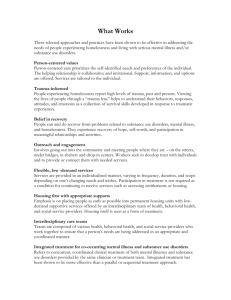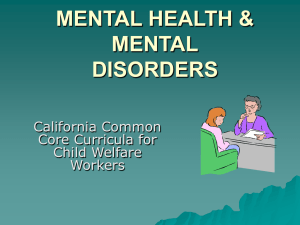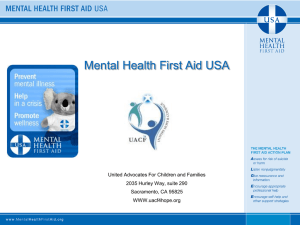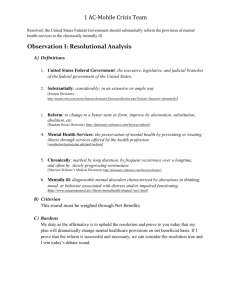Evidence of myths and stereotypes about mental illness as depicted
advertisement
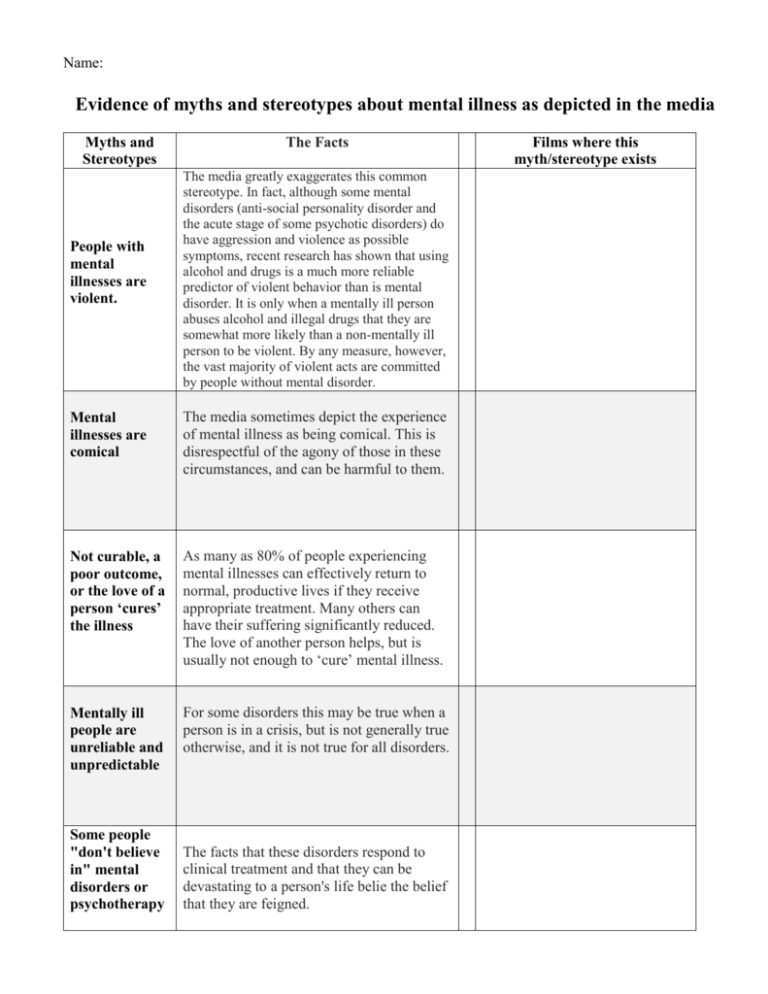
Name: Evidence of myths and stereotypes about mental illness as depicted in the media Myths and Stereotypes People with mental illnesses are violent. The Facts The media greatly exaggerates this common stereotype. In fact, although some mental disorders (anti-social personality disorder and the acute stage of some psychotic disorders) do have aggression and violence as possible symptoms, recent research has shown that using alcohol and drugs is a much more reliable predictor of violent behavior than is mental disorder. It is only when a mentally ill person abuses alcohol and illegal drugs that they are somewhat more likely than a non-mentally ill person to be violent. By any measure, however, the vast majority of violent acts are committed by people without mental disorder. Mental illnesses are comical The media sometimes depict the experience of mental illness as being comical. This is disrespectful of the agony of those in these circumstances, and can be harmful to them. Not curable, a poor outcome, or the love of a person ‘cures’ the illness As many as 80% of people experiencing mental illnesses can effectively return to normal, productive lives if they receive appropriate treatment. Many others can have their suffering significantly reduced. The love of another person helps, but is usually not enough to ‘cure’ mental illness. Mentally ill people are unreliable and unpredictable For some disorders this may be true when a person is in a crisis, but is not generally true otherwise, and it is not true for all disorders. Some people "don't believe in" mental disorders or psychotherapy The facts that these disorders respond to clinical treatment and that they can be devastating to a person's life belie the belief that they are feigned. Films where this myth/stereotype exists You cannot communicate with people with mental disorders Although symptoms of some mental disorders involve disturbances in communication, most people with mental disorders, even those in acute psychiatric stress, can communicate with others and tell at least some of what is happening. Mental illness is evidence of character flaws Tragically, this baseless stereotype keeps many people from getting the help they and you are need, and that is readily available. weak if you need to seek help Mental illness is a result of poor parenting People with mental disorders have nothing to contribute to society Depression is caused by a chemical imbalance People with mental disorders have bizarre, disruptive behavior Mental illness is caused by a variety of inherited and environmental factors. Abusive parenting can contribute to mental disorders. But, good parenting may not be able to shield a child from mental illness, since many causative factors are not in the power of a parent to affect. This is patently untrue. Many of the most creative artists, poets and writers have lived with some sort of mental disorder. Since 20% of the population will develop a mental disorder every year, clearly there are millions of people with mental disorders who contribute to society. Thanks to direct-to-consumer drug ads, many think mental illness treatment is simple and requires only a wonder drug to correct a chemical imbalance. Though there’s a plus side — it squashes the idea that mental illness is a “moral failing,” — this hypothesis hasn’t been substantiated with research and oversimplifies depression’s causes and treatment. While it is true that some mental disorders involve disruptive behavior, most disorders do not. If guidelines on appropriate behavior are in place, disruption from any person with or without a mental disorder can be limited. (From: http://psychcentral.com/lib/medias-damaging-depictions-of-mental-illness/0002220?all=1)


